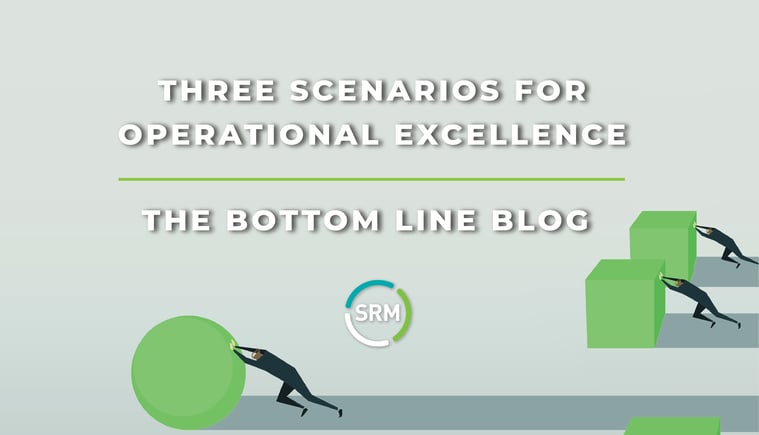
With vaccinations ramping up and most businesses reopening this spring, it’s getting easier to envision a return to normalcy later in 2021. Even so, neither Main Street entrepreneurs nor bankers are quite ready to heave a sigh of relief.
As has been seen...and experienced, some need more assistance than others, and some have proven adaptable to new conditions, whatever comes next.
Consider your longtime favorite businesses that have avoided being “Permanently Closed.” These have shown they can adapt their operations to change with the needs of their consumers. Although flavors, logos, and levels of service may not have changed, their internal operations, org chart, and behind-the-scenes technology mix can look completely different.
This aspect of digital transformation goes for banks and credit unions, as well. A new SRM Academy Report outlines how several evolving operational requirements can even lead to finding new revenue sources. The two case studies included in the report offer real-world use cases for Operational Excellence using seven “Pillars” that banking leadership can use to become adaptable to any scenario.
Planning for What’s Next, and All the Rest
Looking ahead, we would advise planning for a best case, worst case, and a “most likely” case scenario that would fall somewhere between the other two.
Historically, strategic planning has focused on high-growth scenarios, but we’ve seen many clients in recent years face increased investment in unfamiliar channels, as well as the uncomfortable questions around the scope of established branch networks.
Now, whether it’s ordering restaurant deliveries or money transfers, even if adoption rates proceeded more slowly than initial rosy projections, customers are undeniably trending toward doing more of their business online – banking or otherwise.
Planning for this “most likely” case scenario around the customers’ growing preference for online services, financial institutions who were already prepared for this trend likely spared themselves a fair bit of stress in 2020 and into 2021.
Sorting Through the Keepers and the Fads
Focusing on the best-case scenario, businesses and consumers will need to address a pent-up demand for basic human interaction as the pandemic winds down. Which of the behaviors adopted over the past year are likely to be kept? Will old habits prevail in the long run? The answer is: it depends on where you are, and the consumers there.
The answers have major implications for digital investment, branch network planning, staffing of call centers, and the build-out of artificial intelligence capabilities. Banks and credit unions did a remarkable job of providing uninterrupted service throughout the pandemic thanks to an array of innovative rapid response actions.
Download SRM’s Seven Pillars for Post-Pandemic Processes for a broad-spectrum overview of the effects of pandemic-related operational disruptions.
Once each of the three scenarios is considered, the go-forward challenge is to create new behind-the-scenes processes that will help optimize new working models – ones that will be adaptable for the long run.
The Bottom Line
Following the extreme turbulence of 2020, the outlook remains far from certain but preparing for the best case, worst-case, and most likely case scenarios can provide guidelines for operational planning in times of uncertainty.
And although each scenario will be tailored to their consumer base, all should be working toward building new operational breakthroughs into their go-forward plans. SRM’s latest white paper offers concrete steps to help banks and credit unions achieve this objective.
When the clouds begin to part, will your operations be prepared for the various scenarios in the months and years ahead?


